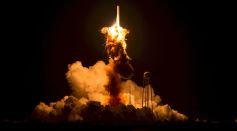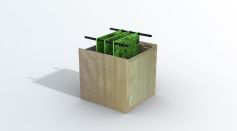Tags: Space Junk
Elon Musk Plans to 'Chomp up' Space Junk Using SpaceX Starship as Garbage May Clog Earth's Orbit
Junked Starlink Satellite, Falcon 9 Rocket Debris Threatens Russian Space Station Cargo Ship

Mushrooms Could Solve Space Junk Problem Through Satellites Made of Mycelium Fibers
What Happens If Space Junk Lands on Your Home? Space Law Shares Steps on What to Do

Space Junk Getting Out of Hand; Regulation and New Technology Needed To Clean up Debris

Falcon 9 Rocket Debris Creates Light Show Over Pacific Northwest Sky

Japanese Space Firm to Launch Satellite That Will Use Magnets to Clean Space Junk
Overly Crowded Space Can Be Solved by De-orbiting Satellites
Drifting Island-Like Space Trash in Low-Earth Orbit Pose Threat to Satellites

Japan Planning to Launch the First Wooden Satellite in 2023
ESA To Use "The Claw" to Clean Up Space Junk
Spent Rockets To Be Repurposed Into Miniature Space Stations
New Research Concerning Imposter Stars May Help Future Astronomical Studies
Peter Beck, Rocket Lab CEO, Warns of Growing Congestion in Space
"Debris is Getting Worse!" ISS Performs Maneuvers to Avoid Space Debris

Space Junk Can Now Be Mapped After Corrections in Laser Scope Algorithms
OSCAR: The Space Janitor
Space Junk Left In Space: Humanity's Next Pollution Problem With Proposed Solutions
WTF Space Debris in Collision Course to Earth
Why the ISS Needs a Big Laser Cannon
Most Popular

Will Earth's Magnetic Poles Flip Next? Magnetic Pole Reversal Explained Through Cutting‑Edge Magnetosphere Science

Relativity Time Dilation Explained: The Physics of Time and Why It Moves Differently in Space

How Lightning Science Reveals Why Charged Storms Are Rising with Global Warming Effects

How AI Is Used in Weather Prediction: Smarter Forecasting Through Machine Learning




